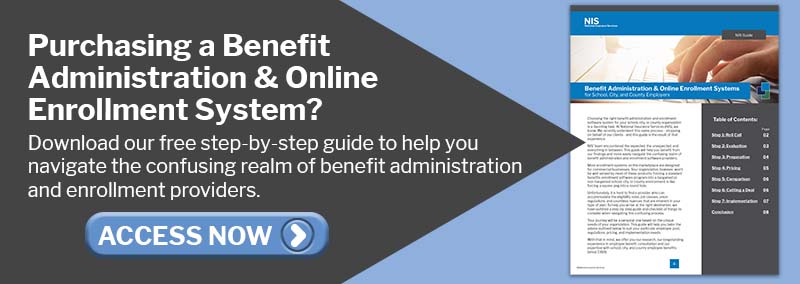5 minute read
In a recent informal survey, we asked some of our customers what’s their biggest frustration about communicating benefits to employees. Their answers revolved around a few main issues:
Employees ignore the emails they send to them.
(Not) surprisingly, our research uncovered that 62% of employees want to receive benefit information from their employer electronically, but only 34% claim to pay attention to all the materials they receive.1
Some employees have trouble enrolling on time, and Human Resources seems to spend a frustrating amount of time following up with employees via email and phone to make sure they meet their enrollment deadlines.
So why do we have this problem?
Data has shown that people spend an average of 10 hours researching a new car purchase; 5 hours planning a vacation; 5 hours shopping for a new computer, and 2 hours buying a TV.2 But when it comes to shopping for health, dental, life, and disability insurance:
People (56%) spent less than 30 minutes researching their benefits and over one-third (34%) spent less than 15 minutes.3
Employees agree that having a benefits package is important to them but researching, reviewing, and selecting a plan can be overwhelming. Certainly, no one enjoys considering the possibility of sickness or injury, disability, or death. They dread open enrollment so much that:
- 38% would rather clean out their email inbox
- Nearly 1 in 4 (23%) would rather clean their toilet
- 18% would rather do their taxes3
Why is this such a daunting task?
Because choosing benefits is stressful. Why? Because we know it’s important, but it’s also challenging. When we do not have the time or background knowledge to immediately handle a task that we know has critical significance, the result is stress.
- 49% of employees say making health insurance decisions is always "very stressful" for them
- 41% also find the open enrollment process "extremely confusing”
- 73% of employees have trouble understanding what is covered by their policies1
So, it comes down to employees wanting to make good decisions for themselves and their families, but because the process is so confusing, they would rather clean their toilet! Unfortunately, 20% of employees regret the benefits choices they make.1
So how can schools, cities, and counties help their stressed employees deal with complex information overload?
Many public sector organizations are implementing online enrollment and benefit administration systems to help them with employee education.
These systems provide online service that allows you to carry out employee benefit education, communication, enrollment, and most human resources tasks electronically. It can help you plan and administer employee benefits packages with the confidence of knowing that everything follows government regulations and compliance in one central location. It can handle online enrollments, allow employees to adjust their plans on their own, go paperless, and submit forms online.
Having a remote method of benefit education is extremely important, especially in these difficult times. Employees can access valuable information at any time from the safety of their own homes.
Using the system is easy. During open enrollment, employees log in and sign up for coverage, line-by-line, for all the benefits you offer. As they work through the system, the program automatically calculates the cost per paycheck for both the employee and employer.
But this doesn’t mean that your employee has to do all the work themselves. These systems offer one-on-one, personalized telephonic employee enrollment meetings to help your employees make the best decisions for their needs. Your employees get the personalized experience along with the education and communication they’re looking for to help them understand and make the best use of their benefits.
The most unique part of benefit administration systems, and perhaps the most important, is the ease of access. Employees can log on to the system at any time during the year to look up information about their benefits. Not sure about a medical deductible amount? No problem. Need to check how much a dental plan pays for a filling? The information is a few keystrokes away – eliminating the frustration of trying to track down those easy-to-lose benefit packets.
On top of that, you get the convenience of having one, central repository for your benefit management, along with simplified, easy-to-use reporting capabilities – streamlining your HR process.
Some benefit administration systems are provided to you at no cost by offering your employees worksite benefits like accident, cancer, critical-illness, or hospital indemnity coverage. The sale of these financial protection products covers the cost of the system. When employees elect these programs, all plans are voluntary and designed to suit each individual’s own needs and discussed at the time of enrollment with their insurance counselor.
Ready to ease your employee benefit burdens? Contact your NIS Representative to learn more.
1 https://www.shrm.org/resourcesandtools/hr-topics/benefits/pages/open-enroll-benefits-confusion.aspx
3 https://www.aflac.com/about-aflac/newsroom/press-release-story.aspx?rid=729

